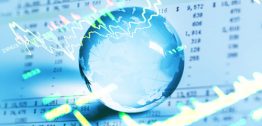The Fed’s big, potentially market-moving event, turned out to be a snooze fest, just as I expected.
The annual Woodstock for central bankers at Jackson Hole, Wyo., ended with no surprises.
After all, when your headline acts are Janet Yellen and Mario Draghi, it’s time to pass out the NoDoz!
Still, there exists a glaring disconnect between what the Fed is saying about the path for monetary policy over the next few months and what the market believes that path will be.
Markets are a bit too complacent about monetary policy. And, something’s got to give, which is bound to lead to unexpected volatility ahead. Here’s why …
First, the odds of another Fed rate hike this year have been falling fast, with only a 1-in-3 chance of an increase in rates by the end of 2017, according to the latest data. That’s down from better than 50-50 odds of a rate hike just a few weeks ago.
Meanwhile, public comments by Federal Reserve officials — other than Janet Yellen — have consistently mentioned risks to financial stability if the Fed doesn’t continue to raise rates from our still extraordinary low levels.
Second, the Fed is prepared to start unwinding its $4.5 trillion bloated balance sheet of Treasury and mortgage-backed securities – perhaps by as much as $10 billion to $50 billion a month.
Details could come as soon as the September policy meetings, just a few weeks away. But in July, several Fed members were already prepared to start shrinking the balance sheet.
And nobody really knows what impact the unwind will have on fixed-income markets, once the Fed becomes a seller of bonds, after nearly a decade of being the buyer of last resort.

Third, two of the most crowded trades on Wall Street right now are to be short the U.S. dollar (long the euro) and long U.S. Treasury bonds.
These trades are wagers that the Fed doesn’t raise rates as aggressively as expected and/or doesn’t begin unwinding their balance sheet.
I’m willing to take the other side of those bets, because sentiment is completely at odds with what the Fed itself has telegraphed to the markets. Talk about excessive complacency!
Adding to my conviction, our own E-Wave cycle model is forecasting both a sharp reversal to the upside for the dollar, plus a selloff in Treasury bonds during the months of September and October, which lines up perfectly with the next Fed meeting.
How to profit from it: If you’re willing to take the other side of these trades too, consider these two ETFs: PowerShares DB U.S. Dollar Index Bullish Fund (UUP) and ProShares Short 20+ Year Treasury (TBF).
UUP is designed to rise in value along with the buck, meaning a euro decline. And TBF is designed to move up as long-term Treasury bond prices go down and yields rise.
Good investing,
Mike Burnick

